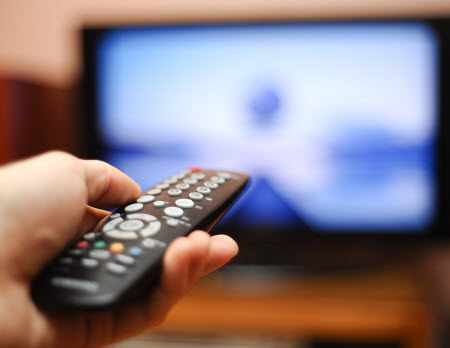Pay TV: Leaking More Subs

Pay TV subscriber rolls continued to dwindle in the seasonally weak second quarter, as losses from telco-TV service providers continued to weigh heavily on the sector.
Meanwhile, continued improvements by cable operators and declines at content providers suggest a widening gap between cord-cutters and cord-shavers.
The pay TV industry lost 757,000 basic video subscribers in the second quarter, an increase from the 683,000 it lost in the same period last year, according to MoffettNathanson principal and senior analyst Craig Moffett. Including estimates from Dish Network’s Sling TV over-the-top service, the sector lost 708,000 subscribers in 2016 and 613,000 customers in 2015.
Cable continued to temper its customer declines: It shed 242,000 video customers in the period, nearly half the 404,000 it lost in the prior year. But telco-TV losses increased exponentially at 526,000 for the quarter, compared to a gain of 5,000 in the prior year.
Satellite-TV providers continued on their roller coaster ride, adding 12,000 in the period compared to a loss of 284,000 in the prior year. Exactly where those customers are going is a little murkier. There has generally been a straight line from multichannel video programming distributor (MVPD) losses to cord-cutting, but that path has become a little less clear over the past several quarters.
The Walt Disney Co. has shed more than 4 million subscribers over the past year, while content companies such as Discovery Communications and Time Warner Inc. have estimated subscriber losses of about 2%. Those figures are based on Nielsen data that doesn’t take into account over-the-top distributors (which could number about 800,000 subscribers via Moffett’s estimates) and skinny bundles from traditional and non-traditional sources.
“[H]ere’s what we do know. Cable is doing well. The telcos are doing badly. And satellite is mixed,” Moffett wrote in a note to clients.
The smarter way to stay on top of the multichannel video marketplace. Sign up below.
BTIG media analyst Rich Greenfield, who has for years warned that OTT services are a real threat to the traditional MVPD subscriber base, sees the Q2 results as more evidence that the traditional pay TV model is eroding.
Though he doesn’t expect a wholesale collapse anytime soon, Greenfield wrote in a blog post that he sees the pay TV model getting slowly chipped away.
“Just a few years ago, the industry was adding video subs at a 1-2% rate; now the industry is losing 2% through cutting/shaving, not to mention the growing pressure from cord-nevers,” he wrote. Data suggests annual losses of 3, 4 or even 5% could become reality in the next few years, he added.
“It may not happen, but it certainly feels like the big TV bundle is becoming less and less important to consumers, given a poor price/value equation,” he wrote.
Moffett said telco TV’s erosion is due partly to the “perfect storm” of a strike at Verizon Communications, Frontier Communications’s initial problems in transitioning former Fios TV markets it bought earlier this year and AT&T’s conversion of U-verse TV subscribers to DirecTV.
Even considering those developments, telco TV’s reversal of fortune is extraordinary. Moffett noted that telco TV subscriptions have gone from a 6.1% increase to a 9.1% decline in just one year.
Cable operators continued to build on the momentum of past quarters. Comcast improved its video losses in Q2 to just 4,000 (compared to a loss of 69,000 in the prior year — its best second quarter in more than a decade), while Charter Communications lost 152,000 video customers in the period, better than the 170,000 it shed in Q2 2015. Cablevision, now part of Altice USA, lost just 2,000 subscribers for its best Q2 in four years.
“Can cable’s relative position get any better?” Morgan Stanley media analyst Ben Swinburne asked in a note to clients. He pointed to Charter’s improvements, adding that more are expected.
“[W]e think Charter’s best market share days remain ahead of it,” Swinburne wrote.
Pivotal Research Group CEO and senior media & communications analyst Jeff Wlodarczak said he believes cable’s momentum will continue at the expense of the telcos. “In the end, cable simply has a better mousetrap, which will become even more apparent in ’17 when cable inexpensively upgrades its network for DOCSIS 3.1 and its 1 [Gigabit-per-second]-plus potential download speeds,” he wrote in a note to clients.
